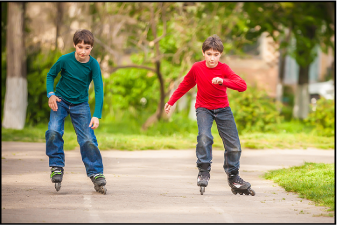[P], [S], [A], and [M] modes give you varying degrees of control over shutter speed and aperture.
Let the camera choose shutter speed and aperture for optimal exposure. Other values that produce the same exposure can be selected with program shift.
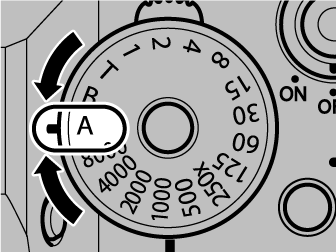
Shutter speed: Select [A] (auto).

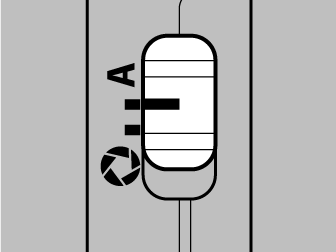
Aperture: Select [A] (auto).
Set shutter speed and aperture to [A] (auto) and confirm that [P] appears in the display.
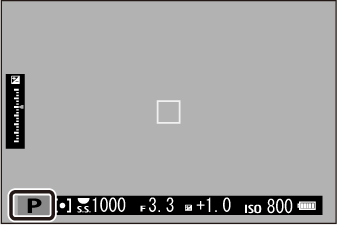
If the subject is outside the metering range of the camera, the shutter speed and aperture displays will show “– – –”.
To use the shutter speed dial, press the dial lock release and rotate the dial to the desired setting.
Program Shift
If desired, you can rotate the rear command dial to select other combinations of shutter speed and aperture without altering exposure (program shift).
Shutter speed
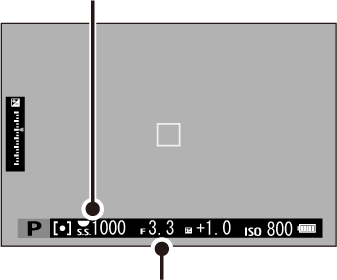
Aperture
Program shift is not available during movie recording or if the flash supports TTL auto or an auto option is selected for [IMAGE QUALITY SETTING] > [DYNAMIC RANGE].
To cancel program shift, turn the camera off.
Choose a shutter speed and let the camera adjust aperture for optimal exposure.
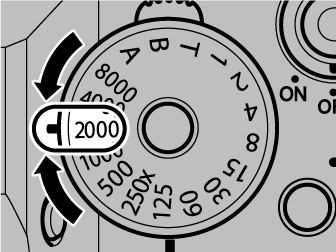
Shutter speed: Choose a speed.


Aperture: Select [A] (auto).
Set aperture to [A] (auto) and use the shutter speed dial to choose a shutter speed. [S] will appear in the display.
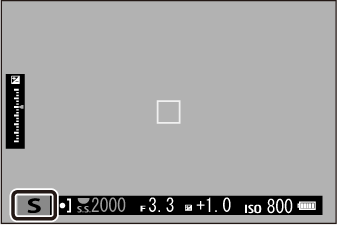
If the correct exposure can not be achieved at the selected shutter speed, aperture will be displayed in red. If the subject is outside the metering range of the camera, the aperture display will show “– – –”.
To use the shutter speed dial, press the dial lock release and rotate the dial to the desired setting (the dial can be used even while the shutter button is pressed halfway). Shutter speed can also be adjusted in increments of 1/3 EV by rotating the rear command dial.
Sensitivity and Depth of Field
If you choose a fast shutter speed when the subject is poorly lit, the camera autoexposure program will select a wider aperture. This will produce the correct exposure but may also reduce depth of field so that less of the area behind and in front of your subject appears to be in focus. To stop aperture down and increase depth of field, select a higher sensitivity.
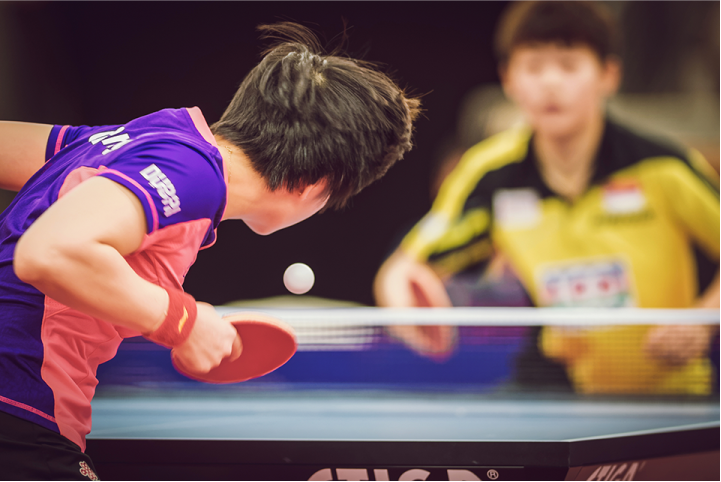
Rotate the shutter speed dial to [T] (time) to choose slow shutter speeds for long time-exposures. Use of a tripod is recommended to prevent the camera moving during the exposure.
Rotate the shutter speed dial to [T].
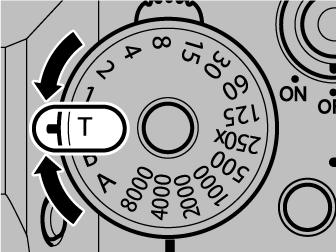
Rotate the rear command dial to choose a shutter speed.

Press the shutter button all the way down to take a picture at the selected shutter speed. A count-down timer will be displayed while the exposure is in progress.
To reduce “noise” (mottling) in long time-exposures, select [ON] for [IMAGE QUALITY SETTING] > [LONG EXPOSURE NR]. Note that this may increase the time needed to record images after shooting.
Select a shutter speed of [B] (bulb) for long time-exposures in which you open and close the shutter manually. Use of a tripod is recommended to prevent the camera moving during the exposure.
Rotate the shutter speed dial to [B].

Press the shutter button all the way down. The shutter will remain open for up to 60 minutes while the shutter button is pressed; the display shows the time elapsed since the exposure started.
Selecting an aperture of [A] fixes shutter speed at 30 s.
To reduce “noise” (mottling) in long time-exposures, select [ON] for [IMAGE QUALITY SETTING] > [LONG EXPOSURE NR]. Note that this may increase the time needed to record images after shooting.
Using a Remote Release
An optional RR-90 remote release can be used for long time-exposures. The RR‑90 connects via the Micro USB (Micro-B) USB 2.0 connector.
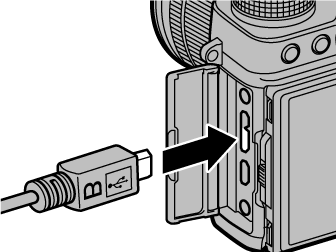
Alternatively, electronic releases from third-party suppliers can be connected via the remote release connector. Use releases with a Φ2.5 mm connector.
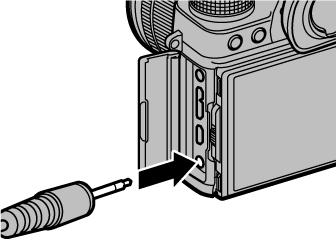
Third-party mechanical releases connect as shown.
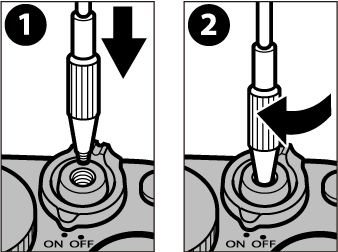
Choose an aperture and let the camera adjust shutter speed for optimal exposure.

Shutter speed: Select [A] (auto).


Aperture: Select (manual).
Rotate the shutter speed dial to [A] (auto), set aperture to , and rotate the lens aperture ring to adjust aperture as desired. [A] will appear in the display.
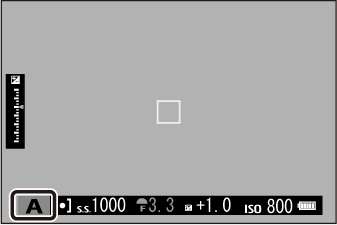
If the correct exposure can not be achieved at the selected aperture, shutter speed will be displayed in red. If the subject is outside the metering range of the camera, the shutter speed display will show “– – –”.
To use the shutter speed dial, press the dial lock release and rotate the dial to the desired setting.
Aperture can be adjusted even while the shutter button is pressed halfway.
Previewing Depth of Field
When [PREVIEW DEPTH OF FIELD] is assigned to a function button, pressing the button stops aperture down to the selected setting, allowing depth of field to be previewed in the display.
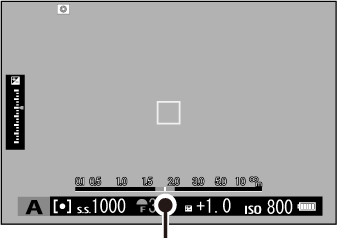
Depth of field
Depth of field can also be previewed using the depth-of-field indicator in the standard display. Press [DISP]/[BACK] to cycle through display modes until standard indicators are displayed.
Use the [AF/MF SETTING] > [DEPTH-OF-FIELD SCALE] option to choose how depth of field is displayed. Choose [FILM FORMAT BASIS] to help you make practical assessments of depth of field for pictures that will be viewed as prints and the like, [PIXEL BASIS] to help you assess depth of field for pictures that will be viewed at high resolutions on computers or other electronic displays.
Sensitivity and Motion Blur
If you choose a narrow aperture when the subject is poorly lit, the shutter speed selected by the autoexposure program may not be fast enough to prevent motion blur. For faster shutter speeds that reduce motion blur, select a higher sensitivity.

Alter exposure from that selected by the camera.

Shutter speed: Choose a speed.


Aperture: Select (manual).
Set shutter speed to a value other than [A], set aperture to , and rotate the lens aperture ring to choose the aperture. [M] will appear in the display.
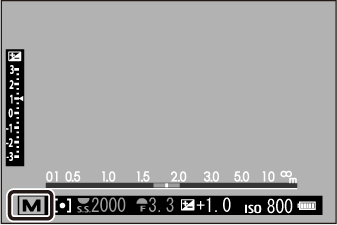
To use the shutter speed dial, press the dial lock release and rotate the dial to the desired setting. Shutter speed can be adjusted in increments of 1/3 EV by rotating the rear command dial.
Exposure Preview
To preview exposure in the LCD monitor, select an option other than [OFF] for [SCREEN SET-UP] > [PREVIEW EXP./WB IN MANUAL MODE]. Select [OFF] when using the flash or on other occasions on which exposure may change when the picture is taken.

